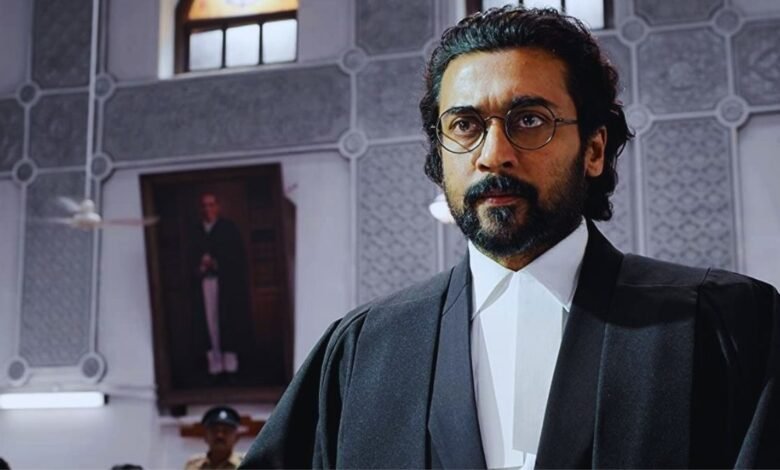Tamil film Jai Bhim surpasses The Shawshank Redemption’s IMDb ratings

Jai Bhim gets IMDb ratings of 9.6 with 82K votes, and The Shawshank Redemption has IMDb ratings of 9.3 with 2.5 million votes.
Tamil Movie Jai Bhim has surpassed the IMDb ratings of Hollywood popular drama The Shawshank Redemption. The courtroom drama has received IMDb ratings of 9.6 with 82K votes, and The Shawshank Redemption has IMDb ratings of 9.3 with 2.5 million votes.
Rightly, the vernacular movie has expressed the facts without any understatement or overstatement. This influenced actor Suriya’s statement to Sengani — Explain the events exactly, nothing less or more — in the movie.
Thus, Jay Bhim’s IMDb rating is perfect too. Nothing less or nothing more!
Just an interpretation of real-time events
Sitting at home with the luxury of education and reach, most audiences would have felt that the movie exaggerated the truth of custodial torture as they are miles away from a jail sight. Thus director T J Gnanavel felt the need of Suriya’s advocate Chandru statement.
Even after knowing their rights, commoners are scared of the police. How someone surviving in the cracks of democracy and religion can fight for their rights and dignity. Their rights are luxury, and their dignity is at the feet of other upper castes. The accused still roams free without facing any consequence.
Unlike other similar movies, Jai Bhim translates the process of getting justice without much despondency. Both parties (Police and Law) were portrayed in black and white. There was no discrimination against the screen time of the colours. The judges were just and considerate.
Criminals don’t have specific community
Another message that Jai Bhim tries to convey in the hindsight is – Criminals don’t have any community. They can be Dalit or an upper caste. The arrests were based on the assumption that most of the tribals were habitual offenders.
As the drama unfolds, Chandru uses the power of law to help a minority father whose son has been incarcerated by the cops, who are under pressure to close pending cases for promotion. He persuaded the court to grant bails for 7,000 such arrests with just one petition. It gives us a sense of the power of Indian law.
Jai Bhim’s plot
The movie is about the struggle of a young and helpless tribal woman, Sengani, who was ready to take any road to find her missing husband, Rajakannu. Initially, the case seemed impossible as all evidence supported the bigoted cop’s version of the story.
But Chandru steps in and starts connecting the dots to prove the injustice against a tribal man. He tirelessly travels crime spots and follow-up places. IG of state police also conducts a free and fair investigation of the case after being appointed as an enquiry officer by the court.
The investigation revealed that police officers were aware of Rajakannu’s innocence. They were forcefully trying to make him accept the crime as officers accepted a bribe from the real offenders.
The realistic cast
Chandru, a follower of BR Ambedkar, stands up to the entire machinery of the government on behalf of the heavily pregnant and helpless woman. He is not a king or an activist-influencer. He is just a lawyer who believes and knows Indian Constitution. Like an off-screen lawyer, Suriya doesn’t flash his black robe while wearing it. He sits on the floors of the train in a general compartment.
The film lies on the shoulder of Sengani, played by Lijo Mol Jose. Her innocent and hapless expression while fighting the case invokes shame in our minds and development. The pride of being a fighter is constant.
Rajakannu, played by Manikandan, is an embodiment of Gandhian values. The torture that eventually killed him could not break him or earn his obedience. To keep our Gandhian values alive, we need a fire band lawyer like Chandru, who undoubtedly believes every word he says during the hearing.
It shouldn’t be all about the movie
The rating confirmed that audiences loved the movie. But in reality, the question lies that whether we are ready to step in when put into such a situation. In the current situation, our keyboard witnesses our anger more than the accused. The only step we take is uploading the problem on social media.
But is this enough. Is there even a point in writing something on Facebook, when we know that multiple such incidents are happening while we type that post? In India, digital penetration is abysmal. The victim or the accused might not even have a smartphone.
The viewers who will like the post is unlikely to share or forward it. Therefore, your post lost its reason for becoming a post.

